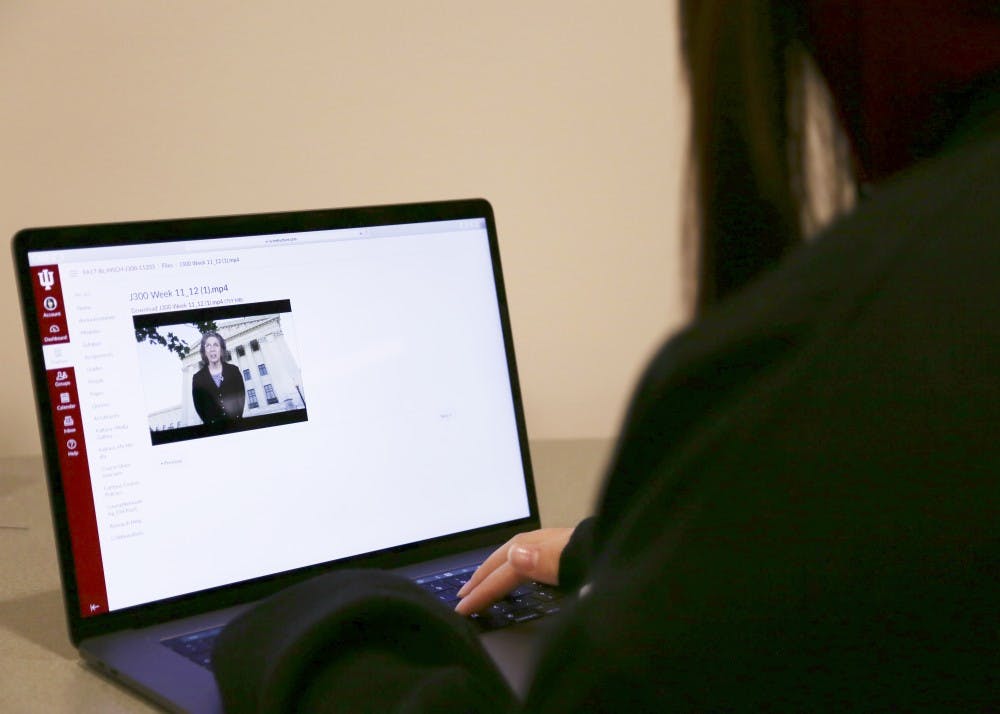One IU professor spent summer 2016 preparing for class not through writing lecture notes, but by creating 120 10-minute informative videos to post to his students, many of which he deleted to make edits. This was his first time teaching an online class, and he spent a lot of time preparing for it.
Astronomy professor Stuart Mufson is one of hundreds of professors teaching through IU Online, a program for students to take courses or complete degree programs from their computers. IU Online combines students and faculty from all seven campuses in the courses offered.
“I think it’s the way of the future,” Mufson said.
Chris Foley, director of the Office of Online Education, said the courses allow undergraduate students with busy schedules, jobs or families to complete their courses without making a trip to campus. He said it also benefits graduate students who are looking for credentials to enhance their job performance or change career fields altogether.
“You can reach out to populations you weren’t able to reach out to before,” Foley said.
Mufson said it was a big adjustment from seeing students face-to-face in a lecture hall to not seeing most students at all in person. He said not being able to recognize students if he saw them somewhere was a strange feeling.
“It’s worlds different,” Mufson said.
Mufson said he became interested in IU Online for his elementary astronomy class, which accepts around 100 students, after noticing a lack of attention from his students during his lectures. He said many students would sit on their laptops or phones, but he had no way of stopping it like he could in a smaller class setting.
“I decided if I can’t beat them, I’ll join them,” Mufson said.
Foley said the courses bring together students who are dispersed across IU’s campuses, ranging from those who only take online classes to those who take mostly face-to-face classes. He said the students are virtually sitting next to each other in the online classroom.
“We do our best to ensure the same social quality and learning expectations from a regular classroom,” Foley said.
While the idea of online education goes back as far as the late 1980s, the Office of Online Education was created in 2012 to facilitate the programs and make sure the classes met IU’s standards, Foley said.
IU Online offers 116 degree programs, both undergraduate and graduate, Foley said. He said this is more than some of the regional campuses offer.
“We try to be more strategic about what we offer,” Foley said. “Not all programs will flourish online.”
Foley said there are three different types of students enrolled in IU Online. Students who regularly take face-to-face classes but are taking at least one online class that semester make up the largest group, with 29,265 enrolled.
Students who are taking only online classes for the semester but are not in an online degree program make up 7,950 of the students enrolled in IU Online. There are 5,066 students who are working on an online degree program.
“We have a pretty broad spectrum of students,” Foley said.
Foley said the professors for online courses come from existing faculty from the seven campuses. He said faculty members often choose to teach their course in an online setting, but if there is a high demand for a online course not currently available, a request is made to the administration.
The amount of work that goes into an online course is usually underestimated, Foley said. He said student interaction is still there but because of the digital environment, it comes in the form of emails and assignments.
Since students are not face-to-face with faculty members, Foley said they often think they are available all the time like any other online software.
“Students begin to expect interaction on their schedule,” Foley said.
After teaching in a face-to-face format for nearly 40 years, Mufson said it is a big adjustment. This is Mufson’s second time teaching The Solar System, an introductory astronomy course, and he said it takes a lot of preparation. Making videos and creating assignments that will be good for an online course takes time to get right.
“You get the hang of it after a while,” Mufson said.




